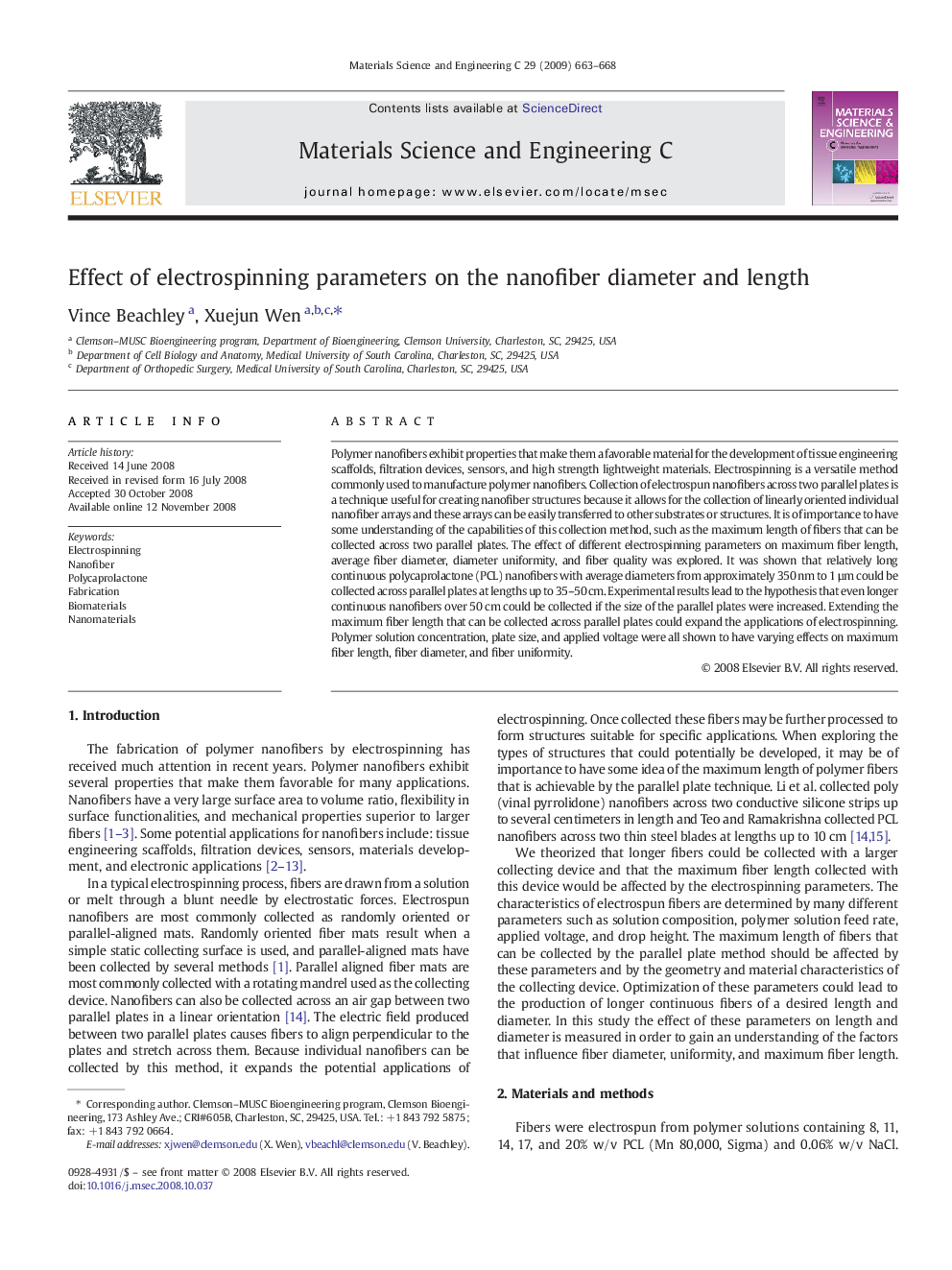| Article ID | Journal | Published Year | Pages | File Type |
|---|---|---|---|---|
| 1430124 | Materials Science and Engineering: C | 2009 | 6 Pages |
Polymer nanofibers exhibit properties that make them a favorable material for the development of tissue engineering scaffolds, filtration devices, sensors, and high strength lightweight materials. Electrospinning is a versatile method commonly used to manufacture polymer nanofibers. Collection of electrospun nanofibers across two parallel plates is a technique useful for creating nanofiber structures because it allows for the collection of linearly oriented individual nanofiber arrays and these arrays can be easily transferred to other substrates or structures. It is of importance to have some understanding of the capabilities of this collection method, such as the maximum length of fibers that can be collected across two parallel plates. The effect of different electrospinning parameters on maximum fiber length, average fiber diameter, diameter uniformity, and fiber quality was explored. It was shown that relatively long continuous polycaprolactone (PCL) nanofibers with average diameters from approximately 350 nm to 1 µm could be collected across parallel plates at lengths up to 35–50 cm. Experimental results lead to the hypothesis that even longer continuous nanofibers over 50 cm could be collected if the size of the parallel plates were increased. Extending the maximum fiber length that can be collected across parallel plates could expand the applications of electrospinning. Polymer solution concentration, plate size, and applied voltage were all shown to have varying effects on maximum fiber length, fiber diameter, and fiber uniformity.
